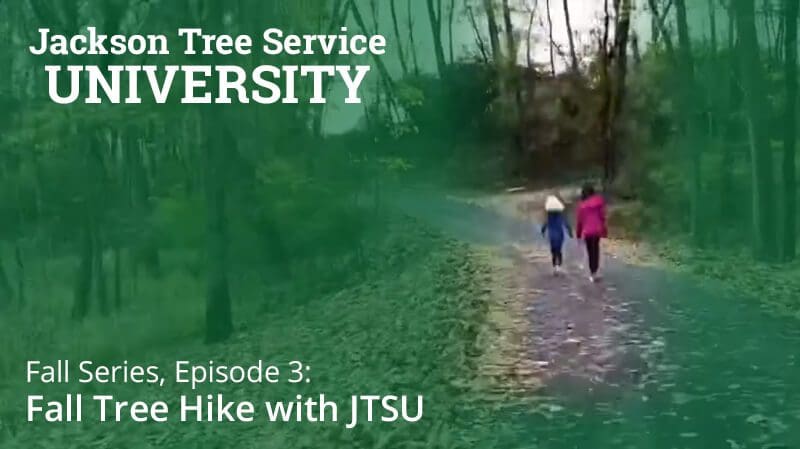Get ready for not just any old hike, but rather a tree hike with our knowledgeable professors of Jackson Tree Service University. Follow along as Carli and Hattie point out the features and uses of five different St. Louis trees (with a short pit stop at the park).
Carli: Hey guys, it’s me, Carli.
Hattie: And me, Hattie.
Carli: We’re your professors here at Jackson Tree Service University.
Hattie: Today, you guys are in luck, because we’re going to take you guys on a hike, but not just any hike, a tree hike.
Carli: All of the trees you guys will be seeing today will be broadleaf trees. So, let’s go.
Black Walnut Tree
Carli: First up we have a black walnut tree. Oh wait, here’s one now. Hattie, did you know that Native Americans used to use the inside of a black walnut to cure intestine diseases?
Hattie: Ew, that’s gross. Black walnut trees can grow to be 125 feet tall.
Carli: That’s humongous.
Carli: Hey Hattie, you ready to go find our next tree?
Hattie: Yeah, let’s go.
River Birch Tree
Hattie: Next up is a river birch tree. River birches grow really fast.
Carli: Native Americans used to boil down the sap and add honey to make birch beer.
American Sycamore Tree
Hattie: Next up is an American sycamore tree, which is a large tree that can grow up to 150 feet tall. It only has one trunk.
Carli: This is the tree Native Americans would use to hollow out to make canoes, and as these trees get older, they shed the bark on their branches.
Carli: We had to take a little break at the playground, but now we’re ready to get going, so let’s go onto the next tree.
Persimmon Tree
Carli: Next up is a persimmon tree, which are used to make jelly, syrup, ice-cream, or pie. Their leaves are used to make tea.
Hattie: Folklore says that you can cut up a persimmon seed and see how harsh the winter’s going to be.
American Hornbeam
Carli: Last of all we have an American hornbeam. They don’t grow very fast, they stay small for a long time. They only get up to 35 feet or less.
Hattie: Wildlife loves the fruit from these tress. Everything from quail, duck, rabbits, deer, turkey. You name it, they love it.
Hattie: We hope you guys learned something today. We hope we can bring you back in the spring and show you all the difference to these trees.
Carli: I hope you guys enjoyed this video and make sure to smash that subscribe button and give us a big thumbs up. If you have any questions, or trees you want us to mention in a different video, make sure to put that down in the comment section below. Thanks for watching, bye.
Hattie: Bye.
Learn More from Jackson Tree Service
We hope you found that video helpful! For assistance with any of your tree needs, be sure to contact Jackson Tree Service today! Oh, and don’t forget to subscribe to our YouTube channel for more educational videos!
Enjoy the rest of our Jackson Tree Service University lessons here.

